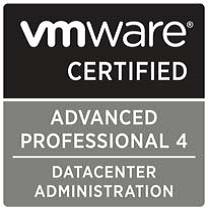I was checking out a few products for disaster recovery with a focus around VMware VM protection. You may have heard of PlateSpin before but if you haven’t actually had the time to try out the product here is my review. First off the PlateSpin Protect can be downloaded for you to see how it works for yourself. PlateSpin is now under the Novell suite of products and comes in two forms. PlateSpin Forge which is a hardware & software solution bundled as an appliance. It consists of a server with storage that has the VMware vSphere 4.x hypervisor installed on it. A Microsoft Windows Server virtual machine runs in the hypervisor which also has the PlateSpin software installed on it. PlateSpin Protect is a software only solution which runs in Microsoft Windows Server and it can be on virtual or physical hardware.
I have not used the bundled solution but from talking engineers from Novell, there’s no difference in the software. I downloaded the software from the Novell site, got my trial license and things went smooth. I used a VM and install Windows 2003 R2 64bit for my test system. Installing the PlateSpin software was very simple but there are a few things you’ll have to do before running the installer. On Windows 2003 R2 I had to install “Internet Information Services (IIS)” and “ASP.Net” which can be found under the Control Panel -> Add/Remove Windows Components -> Application Server and Details. Similar components are needed for Windows 2008 so check the installation documentation provided by Novell.
Once the Components are installed you’ll have to install the .Net Framework as well. 3.5 SP1 was the required version for me and this is easily done by using Windows Update and installing the Framework from the Optional Software section.
When that’s all done PlateSpin Protect could be installed. Just to note. PlateSpin Protect also requires a database server but SQL Server Express can be used and installed from the PlateSpin Protect installer itself. For my lab testing I just went with SQL Server Express.
The installation process is very simple so I don’t see the need to show every step in the process. Once the sql server and PlateSpin Protect software is installed you can start the web client by browsing to. “http://localhost/protect”
Click the Settings tab to add the licenses.
At a minimum the setup requires that you configure a Container which found by clicking the Settings tab in the web client then Containers. The Container will be used as the destination for the replicated source. In my case, I used the type of “VMware DRS Cluster” because I was connecting to a vCenter Server that managed ESX hosts that were in a DRS Cluster. This is one of three options with the other being “VMware ESX Server” and “PlateSpin Image Container”. After choosing ”VMware DRS Cluster” enter in the Hostname or IP for the vCenter Server, Username, and Password. Lastly there is the Purpose drop down menu that consists of “Protection”, “Failback/Deployment” and both “Protection and Failback/Deployment”. I am keeping the defaults here.
When the Container is finished being added to PlateSpin you’ll get some information about the Container as shown below.
At this point we can actually begin adding Workloads to be replicated. Of course you will also want to configure Permissions, Email, and SMTP as well but these are very easy to do.
On a scale of 1 to 5 I’d have to give PlateSpin Protect a 4.5 for installation and setup. It would be an even 5 if the installer configured and installed all of the pre-installation components on it’s own. The documentation was clear enough so that anyone could get it installed right the first time around but being a man I know how we can be when it comes to reading instructions. One strike against the current version of PlateSpin Protect would be the lack of official support for vSphere 5. Even though it’s not officially supported I did test it with vSphere 5 as well and there were no issues.
In the next post I will go into the Workload configuration and Replication of a VM using PlateSpin Protect.





[...] the previous post “PlateSpin Protect product review Part 1″, I went over the process for installing and configuring PlateSpin Protect up to the point of where [...]
I am looking for some reference steps to install a 2 server standard setup with 1 server being Windows 2008 R2 SQL 2005 Server with sql service pack 4 and a single application server. Tech support doesn’t have useful documentation. Any help would be greatly appreciated.
Joel
I don’t have a reference document but this shouldn’t be too hard. When you get to the database location in the installation for Platespin Protect input your ODBC datasource and credentials. Just create the datasource connecting to the remote database server.